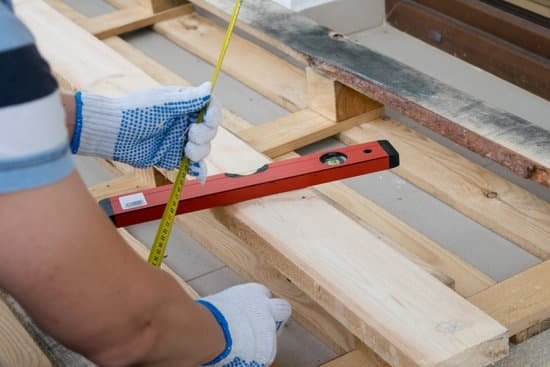Are you interested in learning how to start out in woodworking? Woodworking is a rewarding and fulfilling hobby that allows you to create beautiful and functional pieces from scratch.
Whether you are drawn to the idea of crafting your own furniture, creating intricate designs, or simply working with your hands, woodworking can be an enjoyable and satisfying pursuit. In this article, we will explore the basics of woodworking as a hobby and a craft, and provide valuable insights on how to get started on your woodworking journey.
Woodworking as a hobby offers countless opportunities for creativity and self-expression. The satisfaction of being able to work with wood, shaping it into something unique and personal, is one of the main appeals of this craft. From simple household items to elaborate pieces of art, woodworking allows individuals to bring their ideas to life through practical skills and craftsmanship.
In addition to its creative aspect, woodworking also provides a sense of accomplishment as you see your projects come together from start to finish. With the right guidance and resources, beginners can quickly gain confidence in their abilities and produce high-quality work. This introductory section will give you a glimpse into the world of woodworking and inspire you to take your first steps in this enriching craft.
Essential Tools for Beginners
Starting out in woodworking can be a fulfilling and rewarding endeavor, but it’s important to have the right tools to get started. As a beginner woodworker, there are several essential tools that you will need to have in order to begin working on your first projects. These tools include both hand tools and power tools, each serving a specific purpose in the woodworking process.
For hand tools, it is essential to have a set of chisels, a hand plane, a saw, a marking gauge, a hammer, and clamps. These tools will allow you to accurately measure, mark, shape, and join pieces of wood as you work on your projects. Additionally, having a set of basic power tools such as a drill/driver, random orbital sander, jigsaw or circular saw can greatly simplify many woodworking tasks and make them more efficient.
Before purchasing any tools, it’s important to do some research and planning to ensure that you’re investing in high-quality equipment that will last. Look for reputable brands and read reviews from other woodworkers to get an idea of what tools are reliable and worth the investment. Starting with these basic hand tools and power tools will provide you with the foundation needed to start honing your woodworking skills.
As you become more experienced in woodworking, you may find that you need additional specialized tools for specific projects. However, starting with these essentials will give you the ability to tackle a wide range of beginner-friendly projects as you familiarize yourself with the craft. With the right set of tools at your disposal, you’ll be well-equipped to start out in woodworking and begin building beautiful creations from wood.
Setting Up Your Workshop
Setting up a woodworking workshop is an essential step in starting out in woodworking. A functional and organized workshop will not only make your projects easier to complete but also ensure safety while working with sharp tools and heavy machinery. Here are some tips on creating the perfect woodworking space:
1. Location: Choose a location for your workshop that is well-ventilated and has good lighting. Whether it’s a spare room, garage, or basement, make sure the space is large enough to accommodate your tools and workpieces.
2. Workbench: Invest in a sturdy workbench that provides a flat, stable surface for cutting, sanding, and assembling your projects. Consider building one yourself to customize it to your specific needs.
3. Tool Storage: Proper storage for your tools is crucial for keeping your workshop organized and safe. Use pegboards, tool chests, or wall-mounted racks to keep all your hand tools easily accessible.
4. Dust Collection: Woodworking creates a lot of dust and debris which can be harmful when inhaled. Consider installing a dust collection system or at least using a shop vacuum to keep your workspace clean.
5. Safety Precautions: Always prioritize safety in your woodworking space by wearing appropriate safety gear such as goggles, ear protection, and gloves when operating power tools. Also, keep fire extinguishers handy and ensure all electrical outlets are properly installed.
By following these tips, you can create a safe and efficient woodworking workshop that will set you up for success as you start out in woodworking.
Choosing and Preparing Wood
Wood is the heart of woodworking, and understanding its different types and how to prepare them for your projects is crucial for any beginner woodworker. When starting out in woodworking, it’s important to familiarize yourself with various wood species and their characteristics such as hardness, grain pattern, and color.
Softwoods like pine and cedar are great for beginners due to their workability, while hardwoods like oak and maple offer durability and strength. It’s also essential to understand how different types of wood respond to cutting, shaping, and finishing.
Before starting any woodworking project, it’s important to properly prepare the wood by milling it to the desired dimensions. This involves using tools like a jointer and planer to flatten one face of the board and create a parallel surface on the opposite side. Additionally, learning how to properly store and handle wood is essential to prevent warping or moisture-related damage. This may include using a moisture meter to check the moisture content of the wood before use.
As you progress in your woodworking journey, you’ll also learn about techniques such as sanding, staining, and finishing that are integral parts of preparing wood for a project. Understanding the properties of different woods and how they respond to these techniques will help you achieve professional-looking results in your woodworking endeavors.
| Wood Type | Characteristics |
|---|---|
| Softwood (e.g. Pine) | Workable; lighter color |
| Hardwood (e.g. Oak) | Durable; darker color |
Learning the Basics of Woodworking Techniques
Measuring and Cutting
One of the most fundamental skills in woodworking is accurate measuring and cutting. Before starting any project, it’s crucial to have a good understanding of how to measure and cut wood properly. This includes using tools such as tape measures, combination squares, and marking gauges to ensure precise measurements. Additionally, learning different cutting techniques with hand saws, circular saws, or table saws will be essential for creating clean and accurate cuts.
Shaping and Joining
Once the basic cuts are made, the next step is shaping and joining the wood pieces together. Shaping involves techniques such as planing, sanding, and carving to achieve the desired form and smoothness of the wood. Joining methods include using glue, screws, dowels, or other fasteners to connect multiple pieces of wood together. Understanding these shaping and joining techniques is crucial for creating sturdy and aesthetically pleasing woodworking projects.
Finishing
The final step in completing a woodworking project is finishing. This involves applying a protective finish to the wood surface to enhance its appearance and durability. Common finishing techniques include staining, varnishing, painting, or applying a clear coat to preserve the natural beauty of the wood. Learning how to properly prepare the wood surface and apply different types of finishes is an important skill that all beginner woodworkers should master.
Learning these fundamental woodworking techniques is essential for anyone who wants to start out in woodworking. Knowing how to measure, cut, shape, join, and finish wood properly will lay down a solid foundation for future projects and help beginners build confidence in their craft.
Starting Your First Project
After familiarizing yourself with the essential tools, setting up your workshop, choosing and preparing wood, and learning the basics of woodworking techniques, it’s time to put your newfound knowledge into practice by starting your first woodworking project. For beginners, choosing a beginner-friendly project is crucial to build confidence and avoid frustration. A good starting point is to select a simple project that aligns with your interests and skill level.
One beginner-friendly project idea is building a basic wooden shelf. This project allows you to practice measuring and cutting wood, as well as joining pieces together using simple techniques such as butt joints or pocket hole screws. By following a step-by-step plan for this project, you can apply what you have learned so far in a practical way while creating a functional item for your home.
Before diving into your first woodworking project, it’s important to plan carefully. Start off by sketching out a design or finding a simple blueprint online that suits your skill level. Next, create a materials list including the type and amount of wood needed for the project. Finally, ensure you have all the necessary tools required for the specific project before beginning work.
As you begin working on your first woodworking project, take it slow and pay attention to detail. Following each step carefully will help you gain familiarity with basic woodworking techniques as well as problem-solving skills when faced with challenges during the process. Remember that mistakes are part of the learning experience in woodworking and should not deter you from finishing your first project successfully.
Finding Woodworking Resources
Woodworking is a craft that offers plenty of opportunities for learning and growth, and finding the right resources can be crucial for beginners. Whether you are looking for guidance on techniques, inspiration for projects, or a community to connect with, there are many resources available to help you start out in woodworking.
Books
There are countless books written by experienced woodworkers that can provide valuable insights and instructions on how to start out in woodworking. Look for books that cover the basics of woodworking, as well as those that focus on specific techniques or types of projects. Some popular titles include “The Complete Manual of Woodworking” by Albert Jackson and David Day, “The Essential Woodworker” by Robert Wearing, and “Understanding Wood: A Craftsman’s Guide to Wood Technology” by R. Bruce Hoadley.
Websites
The internet has become a treasure trove of information for woodworkers of all skill levels. Websites such as Fine Woodworking, The Wood Whisperer, Popular Woodworking, and Wood Magazine offer articles, videos, tutorials, and forums where beginners can learn from seasoned professionals and connect with other woodworking enthusiasts. These websites also often feature project plans, tool reviews, and tips on setting up a workshop.
Forums
Joining online forums dedicated to woodworking can be an invaluable resource for beginner woodworkers. Websites like Sawmill Creek, WoodNet Forums, and Reddit’s r/woodworking community provide a platform for asking questions, sharing experiences, seeking advice on specific projects or techniques, and connecting with others who share your passion for woodworking.
By immersing yourself in these valuable resources-books, websites, and forums-you can build a solid foundation of knowledge as you embark on your woodworking journey. These platforms not only serve as practical sources of information but also offer opportunities to connect with other woodworkers who are at various stages in their craft. Ultimately allowing you to expand your skills while feeling supported by an entire community devoted to the trade.
Overcoming Common Challenges
As with any new skill or hobby, beginners in woodworking are bound to encounter common obstacles and mistakes along the way. It’s important to remember that making mistakes is all part of the learning process, and with the right mindset and approach, these challenges can be overcome. Here are some of the most common challenges that beginners may face in woodworking, along with tips on how to address them:
One common obstacle that beginners often encounter is not understanding the properties of different types of wood. This can lead to choosing the wrong type of wood for a project or not properly preparing the wood for use.
To overcome this challenge, it’s essential to take the time to research and familiarize oneself with different wood species, their characteristics, and how they behave when worked with. Additionally, seeking guidance from experienced woodworkers or taking a woodworking class can provide valuable insight into working with different types of wood.
Another challenge that beginners may face is achieving precise measurements and cuts, leading to ill-fitting joints or uneven surfaces. The key to overcoming this challenge lies in mastering fundamental woodworking techniques such as accurate measuring, marking, and cutting. Practice makes perfect in this case, so investing time in honing these skills through repetitive practice will help improve precision over time.
Additionally, many novice woodworkers struggle with finishing techniques such as staining and varnishing, resulting in an unsatisfactory final appearance for their projects. Overcoming this challenge involves learning about different finishing products and techniques through experimentation and seeking advice from more experienced woodworkers or resources such as woodworking websites and forums.
It’s important for beginners to remember that overcoming these challenges is a natural part of the learning process in woodworking. Patience, perseverance, and a willingness to learn from mistakes are crucial for growth and skill development in this craft.
| Common Challenge | Tips on Overcoming |
|---|---|
| Understanding different types of wood | Research wood species, seek guidance from experienced woodworkers |
| Achieving precise measurements and cuts | Practice fundamental woodworking techniques for accuracy |
| Mastering finishing techniques | Experiment with different finishing products and seek advice from experienced woodworkers |
Honing Your Skills
In conclusion, starting out in woodworking can be an incredibly rewarding journey for anyone with an interest in creating beautiful and functional pieces from wood. By understanding the basics and the appeal of woodworking as a hobby and a craft, beginners can embark on their woodworking adventure with confidence.
Equipped with the essential tools and knowledge on setting up a functional workshop, choosing and preparing wood, learning basic techniques, and finding valuable resources, aspiring woodworkers can take their first steps towards creating their own masterpieces.
As beginners progress through their woodworking journey, they will encounter common challenges and obstacles along the way. However, by learning how to overcome these hurdles and honing their skills over time, they can continue improving and expanding their abilities. It’s important for beginners to stay patient, persistent, and open-minded as they gain experience in working with different types of wood and mastering various techniques. With dedication and practice, they will see significant growth in their craftsmanship.
Ultimately, woodworking is not only about creating beautiful pieces; it’s also about personal growth and self-improvement. As beginners hone their skills through continuous learning, practice, and the pursuit of diverse projects, they will find fulfillment in experiencing the tangible results of their efforts.
Whether it’s carving intricate designs or constructing sturdy furniture, the possibilities are endless for those who are willing to invest time and effort into this timeless craft. So if you’re considering how to start out in woodworking – just grab some tools and start building.
Frequently Asked Questions
How Do I Get Started in Woodworking?
Getting started in woodworking can be as simple as familiarizing yourself with basic tools and safety practices, then choosing a small project to begin. Researching online tutorials or taking a beginner’s class can also be incredibly helpful.
How Do I Get Into Woodworking With No Experience?
If you have no prior experience in woodworking, it’s best to start by learning about different types of wood, basic tools, and safety precautions. You can begin practicing with simple projects and gradually work your way up to more complex ones.
Can You Learn Woodworking by Yourself?
It is absolutely possible to learn woodworking by yourself. With the abundance of online resources such as tutorials, forums, and instructional videos, self-teaching is quite feasible for those who are dedicated and motivated to learn. Practice and patience are key when learning any new skill.

Hi everyone! I’m a woodworker and blogger, and this is my woodworking blog. In my blog, I share tips and tricks for woodworkers of all skill levels, as well as project ideas that you can try yourself.





